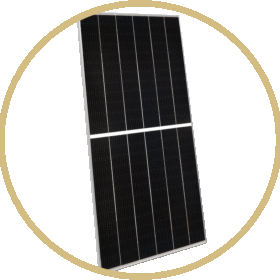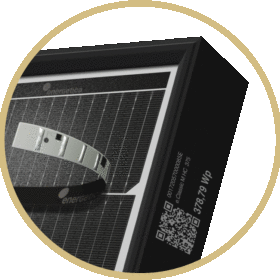The 2020 award winners come from companies based in China, Europe, Israel and Australia – demonstrating that innovation within the increasingly global solar industry occurs in all parts of the world. More than 100 Award entrants came from 18 countries, with China (40), Europe (29), and the United States (24) leading the way.
To select our award winners, pv magazine assembled six expert juries, with representatives from throughout the solar world. These independent adjudicators – industry analysts, technologists, researchers, and industry insiders – bring a wealth of experience and close contact to manufacturers and project developers to the process, and the pv magazine editorial team thanks them for their time and for sharing their expertise.
See our January 2021 print edition for a full rundown of the jurors, winners, finalists and commended entries in each category.
 Modules
Modules
Winner: JinkoSolar Tiger module series
High-density modules, packing more cells and having interconnection ribbons on the rear side, have proven an effective method for raising efficiency and increasing power output. Chinese module giant JinkoSolar developed its “tiling ribbon” technology to produce a “high density” module series – the Tiger. The module series employs a special round busbar interconnection technique to achieve cell overlap on each cell’s horizontal edge (see pv magazine 05/2020).
“The technology is really innovative and it can be applied to all sorts of different cells. For example, if Jinko has HJT in the future then it can also use the tiling ribbon,” said juror Jay Lin. Jinko’s Tiger deploys tiling to great effect, packing 156 half cells into the larger module format for utility-scale and C&I roofs, and 132 for the residential segment. Thus, the Tiger achieves 455-475 W from 156 cells and 375-395 W from 132 – both using mono PERC cells. At 21.6% module efficiency, Jinko’s Tiger is no pussycat.
 Sustainability
Sustainability
Winner: Energetica Industries GmbH
In December 2019, PV panel manufacturer Energetica began producing modules at its fab in Liebenfels, Austria. While initial production is slated at 550 MW per year, it has ambitious plans to ramp up to 1 GW of annual capacity. What makes this manufacturer unique is its sustainable approach – setting a blueprint for other companies to draw inspiration from. Constructed entirely out of wood, the fab itself takes energy from a 2.6 MW rooftop PV system, an adjacent hydropower plant, and wood-fueled (biomass) heating using locally sourced, untreated wood.
“We are particularly impressed by Energetica’s zero-carbon manufacturing,” stated pv magazine’s Sustainability jury. “Most PV modules are essentially dirty glass and can be mechanically recycled, with PV module waste amounting to 0.04% of global glass production in 2019. Energetica has taken steps to choose a more recyclable backsheet, and also uses biodegradable films for packaging.”
 Inverters
Inverters
Winner: SolarEdge Technologies, Energy Hub inverter
Smart home systems have been talked about and to a degree implemented for a few years now. Hitherto, the approach was largely pieced together from various soft- and hardware suppliers. With this product, however, SolarEdge has offered a comprehensive solution to control loads, offer grid support, smart EV charging, and life with the security of backup power. “It offers a pretty comprehensive feature set, controlling the loads and appliances and also including EVs,” says juror Jenya Meydbray. “The 2.0 DC/AC ratio is also very good in terms of DC storage, especially with those power optimizers.”
 Balance of Systems (BoS)
Balance of Systems (BoS)
Winner: 5B Maverick
First launched a couple of years ago, the 5B Maverick is rapidly building a track record of successful installations. A prewired, prefabricated ‘solar block’ that can be folded down, shipped to a site and rolled out, allowing a team of three to install up to 1 MW a week, according to 5B’s estimate.
“I like that it shakes up the ground mount market a bit, by bringing a novel fixed-tilt approach back to the forefront when so many large scale projects use trackers,” says juror Beth Copanas. “As module prices continue to fall and land becomes more constrained, the factory pre-assembled approach coupled with potentially less long-term maintenance than tracking systems, makes this a valuable prospect”
 Materials
Materials
Winner: Jolywood n-type TOPCon Cell
Jolywood is among the first movers bringing TOPCon cell technology to large-scale manufacturing and has already delivered modules featuring this cell to projects the world over. The technology has several inherent advantages over today’s PERC modules, including zero susceptibility to light-induced degradation and a lower temperature coefficient.
“There will be tough competition at gigawatt-scale in the next few years,” warns juror Jonathan Govaerts. “But this cell presents a promising n-type evolution, including large-area IBC approach which will be interesting in the long term.”
 Battery energy storage systems (BESS)
Battery energy storage systems (BESS)
Winner: Jua Barrel
A solar hybrid solution with an innovative design and business model, the Jua battery Barrel equipped with its LifePO4 battery pack, allows storage capacity to be increased in 6.3 kWh increments for a one-size-fits-all solution. Its prepackaged design and software-integrated abilities allow fully programmable capabilities to combine different energy sources – grid, PV, batteries, wind – without the need for hardware changes.
“An innovative product designed to allow the quick deployment of systems while maintaining scalability,” says BESS juror Chris Wright. “The hybrid controller that supports integration of solar PV, battery storage, a diesel genset, and flexibility for on-grid or offgrid installations provides substantial flexibility in system configuration and applications.”
 Publisher’s Pick
Publisher’s Pick
The pv magazine Publisher’s Pick award, selected by pv magazine, for 2020 goes to inverter manufacturer Growatt, which celebrated the tenth anniversary of its founding last year. In just 10 years, the company’s founder. David Ding, and his team have built a multinational enterprise with 13 subsidiaries and six large warehouses around the world with regional teams for marketing, technical support, and after-sales service. Growatt invests 10% of its annual revenues in research and development, and 200 of the company’s 1,200 employees are research and development engineers.
There has been much talk about smart homes, but not many easy-to-use integrated solutions have been introduced to date. Growatt’s GroHome system is a true smart home enabler, and as such a trailblazing solution in making the home more energy-efficient and less reliant on external energy sources. Grohome also puts the homeowner front and center as both consumer and “prosumer,” putting a convenient app at his or her fingertips to manage the system and optimize self-consumption. All this is accelerating the energy transition, making Growatt a very worthy recipient of the 2020 pv magazine award in the category “Publisher’s Pick.”
This content is protected by copyright and may not be reused. If you want to cooperate with us and would like to reuse some of our content, please contact: editors@pv-magazine.com.



5 comments
By submitting this form you agree to pv magazine using your data for the purposes of publishing your comment.
Your personal data will only be disclosed or otherwise transmitted to third parties for the purposes of spam filtering or if this is necessary for technical maintenance of the website. Any other transfer to third parties will not take place unless this is justified on the basis of applicable data protection regulations or if pv magazine is legally obliged to do so.
You may revoke this consent at any time with effect for the future, in which case your personal data will be deleted immediately. Otherwise, your data will be deleted if pv magazine has processed your request or the purpose of data storage is fulfilled.
Further information on data privacy can be found in our Data Protection Policy.